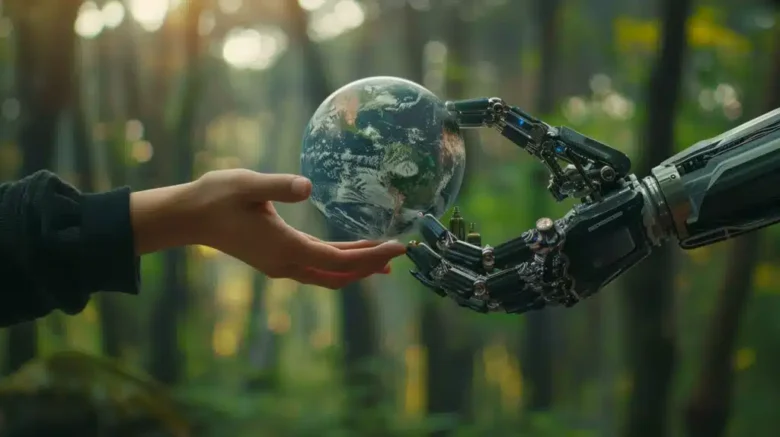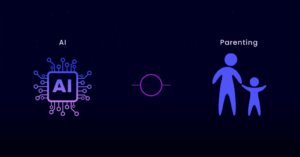Climate change is one of the greatest challenges of our time, threatening ecosystems, economies, and human health. Although the situation is complicated, we now have one more ally in the war against global warming—artificial intelligence (AI). AI is changing the ways we think about environmental sustainability, from optimizing energy use to even predicting extreme weather conditions. Now, scientists, businesses, and even governments are trying to solve problems with the help of AI’s data-crunching abilities. But in what other ways is AI making a difference? Join us as we dive deeper into the astonishing new ways in which AI is fighting climate change and why it is possible that AI could be what makes the world a better place.
AI for Efficient Energy Management:
Inadequate energy consumption is perhaps the biggest contributor to climate change. With the advent of AI, it is transforming the way we generate, distribute, and consume power. Smart grids, powered by AI, anticipate energy demand in real time, reducing waste and incorporating renewable sources, such as solar and wind, more optimally. AI has helped businesses like Google and DeepMind reduce energy consumption in data centers by 40%. Even common people now have access to AI through their smart thermostats, like Nest, which learns user behavior to optimize heating and cooling. AI is aiding in curbing carbon emissions in enormous proportions by augmenting the efficacy of energy systems.
Precision Agriculture: Lowering Waste with AI:
While agriculture is a leading contributor to greenhouse gas emissions, AI technology is enhancing the sustainability of food production. Drones equipped with AI, along with sensors, monitor the health, moisture, and crop condition of each field as a farmer eases into the new age of farming. Businesses such as Blue River Technology are revolutionizing the farming industry by employing machine learning to identify specific weeds and apply pesticides only in targeted areas. This technology is estimated to cut herbicide use by as much as 90 percent. AI is also able to predict crop yields, enabling better resource management and waste reduction. With improved farming strategies, AI tools are further streamlining food production and enhancing its sustainability.
AI Climate Models and Weather Prediction:
Slow, outdated models hinder our understanding of climate and weather patterns, which are essential for combating fire. By predicting the occurrences of weather extremes, rising sea levels, and temperature shifts through large-scale data analysis, AI speeds up climate research. IBM’s Green Horizon Project uses AI to estimate air pollution and provides recommendations to mitigate it. Slow, outdated models hinder our understanding of climate and weather patterns, which are essential for combating fire. It improves vulnerability model analysis for climate change, allowing scientists and governments to make more informed decisions for climate-at-risk places.
AI-Enabled CCS (Carbon Capture and Storage):
Deploying carbon capture tech is not the end; extracting CO₂ from the atmosphere is also crucial. AI is optimizing storage locations and enhancing operational efficiency. Carbon Clean is among the first companies harnessing ML algorithms to improve chemical processes for the capturing of CO₂ on an industrial scale. AI autonomously surveils groundwater storage facilities to curb leakages. Some use carbon capture technologies, but AI is ensuring that carbon capture technologies are rapidly advancing to make it possible to reverse climate damage.
Smart Cities: AI for Sustainable Living within Urban Areas:
The percentage of CO₂ emission footprints in cities stands at 70% and above, and AI is significantly improving these figures. AI ensures emission-free urban centers through enhancing traffic management and light sequencing. The autonomous control of water, power, and even gas resources saves a great deal on expenses. Modern edifices equipped with AI-powered HVAC systems use less energy because they automatically adjust for cooling and heating. Urban planning enhanced through AI integration proactively reverses the city’s infrastructure carbon footprint while improving the quality of life.
AI in Wildlife Preservation and Reforestation Efforts:
As the rate of deforestation and biodiversity loss increases, climate change intensifies, and this is where AI plays a crucial role. AI technology integrated within drones enables the monitoring of illegal logging and tracking of endangered species. AI platforms like Rainforest Connection utilize artificial intelligence to recognize chainsaw sounds in realtime, notifying rangers to suspend deforestation efforts. At the same time, AI assists in designing reforestation strategies by evaluating soil and climate parameters to recommend the optimal tree species for planting. In this manner, AI protects natural ecosystems and maintains the natural carbon sinks of the Earth.
AI-Driven Circular Economy and Waste Minimization:
The circular economy is a zero-waste concept built around eliminating waste, which is extremely essential for sustainability. In this regard, AI optimizes recycling procedures by detecting recyclable materials in waste streams, as well as decreasing landfill emissions. AI companies like AMP Robotics sort recyclables faster than people through AI-powered robotic systems that boost accuracy. Additionally, AI aids organizations in designing products intended for longer usage periods and, in turn, reduces e-waste. By enhancing waste management processes, smarter AI promotes sustainable production cycles.
Conclusion:
Fighting climate change is a matter of innovation; AI technology is proving to be everything we need and more. Ranging from forest protection to advancing agricultural practices, AI offers smarter and faster solutions to these problems. Technology cannot resolve every single issue, but AI is evolving to furnish us the tools to make decisions aimed at cutting emissions and supporting sustainable practices. Such progress certainly puts us one step closer to attaining greener goals. You can anticipate AI’s support in developing even more advanced capabilities to combat climate change shortly. Reducing carbon footprints will always rely on decisive strategies, and with AI, the global fight against climate change can bring the world one step closer to a cleaner environment.
FAQs:
1. In What Ways Does AI Aid in Emission Reduction?
AI directly improves energy efficiency and industrial processes and optimizes transportation, improving CO₂ emission levels.
2. Can AI Predict Climate Catastrophes Accurately?
AI can forecast floods, extreme weather, and even droughts, analyzing countless datasets that provide an edge over traditional methods.
3. Is AI technology utilized in renewable energy?
Without progress, there is no doubt that AI is fully responsible for optimizing wind and solar power generation alongside smart grids and enhancing battery storage systems.
4. How is AI Used in Wildlife Protection?
AI assists in the planning of reforestation projects using drones and sensors. They also help monitor endangered wildlife and illegal logging.
5. Will efforts to combat climate change be taken over with the integration of AI?
No, no, no. AI does see to it that we have the right equipment and gives us the best search techniques, but a united effort along with policies still needs to be embraced.”




